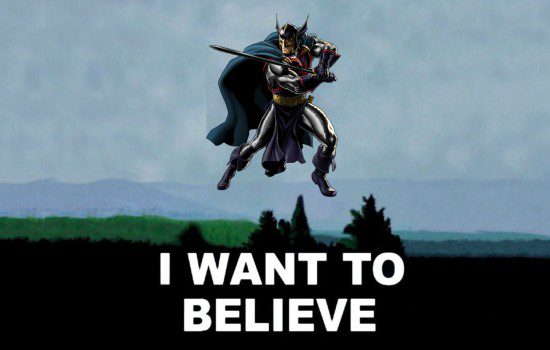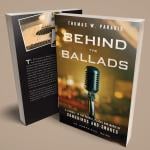Here’s a solid piece from NPR’s “All Things Considered”: “America’s Satanic Panic Returns — This Time Through QAnon.”
The word “returns” isn’t quite right there, not according to the scholars of moral panics that they interview in this piece. According to those folks, moral panics never really go away, they just wax and wane like the tide.

And the familiar tidal ebb and flow of the Satanic Panic has been washing up on our shores for a long time. Danny Davis — defense attorney in the yearslong McMartin Preschool panic case — references “witch hunts,” but this same story goes back centuries before that. The ingredients of every iteration of this, including the Satanic Panic of the late 20th century and its current QAnon variant, are unchanged from the ancient blood libel: a secret cabal of Satan worshippers kidnapping, torturing, killing, and cannibalizing children and babies.
This is the inevitable trajectory of every conspiracy theory in Christendom. The nefarious other must be portrayed as superlatively evil, and thus as having the worst imaginable motives for committing the worst imaginable offenses. In the Western Christian imagination, that means the motive must be Satanism — personal devotion to the personal embodiment of evil. And the superlatively horrifying deeds must include a full “Aristocrats”-like litany of horrors — rape, torture, murder, cannibalism — inflicted on the undeniably undeserving and innocent, i.e., sweet little adorable helpless babies.
If we could imagine something worse than Satanic baby-killers, then that’s where these fantasies would all wind up instead. But usually Satanic baby-killers is sufficient to express that the imagined Threatening Other is superlatively evil, and so that’s where all conspiracy theories inexorably take us.
This is true even of conspiracy theories that might at first seem far removed from anything like the Satanic Panic or the Salem witch trials. I watched that 60 Minutes report on UFOs online late Sunday night and ever since YouTube’s algorithm has been suggesting bonkers UFO and Bigfoot video channels to me. Many of those seem to be from an outfit called Gaia. Who’s that? Well, here’s a story about the bonkers legal battle among the various factions of that group: “Inside the War Between a UFO Influencer and Alien-Friendly Streaming Company.” It’s all about accusations and counter-accusations that the opposing faction of UFO truth-seekers are secretly — yes, you guessed it — Satanic baby-killers.
That train is never late.
The inevitability of this trend toward Satanic baby-killerism is due to something Lawrence Wright describes in that NPR piece. Wright, who won a Pulitzer for his 9/11 book The Looming Tower, also wrote Remembering Satan: A tragic case of recovered memory, about the destruction of one family and community during the Satanic Panic. Wright says the deeper common thread between the Satanic Panic and QAnon is not the specifics of their shared Satanic baby-killer fantasy, but that:
“They see themselves as heroic,” says Wright. “And how can you be heroic in today’s world? Well, you protect the children — you protect the children against this cabal that is out to turn them into sex slaves. How could there be anything more important than that?”
That’s almost right. Wright is absolutely dead on in describing their fantasy world as one that makes them out to be heroic as champions of the superlatively innocent against the superlatively evil.
But really it’s not that “They seem themselves as heroic” but that they don’t see themselves as heroic — that some part of them cannot help but recognize that nothing about their lives provides any legitimate basis for them to view themselves as heroic.
They want to see themselves as heroic. They need to see themselves as heroic. And they won’t hesitate to declare themselves to be heroic. But no matter how loudly they proclaim that, they’re unable to wholly convince even themselves that it is true.
This is the fear that leads to their obsession with imaginary monsters in the dark. They are not afraid of those monsters. They are not afraid for the sweet little innocent babies they pretend to believe are threatened by those monsters. They are afraid of the identity-threatening truth that they cannot screw their courage up enough to face directly: the fact that they are not heroic, not exceptionally brave and virtuous or better than their neighbors.
P.S. The title for this post comes, of course, from this:










